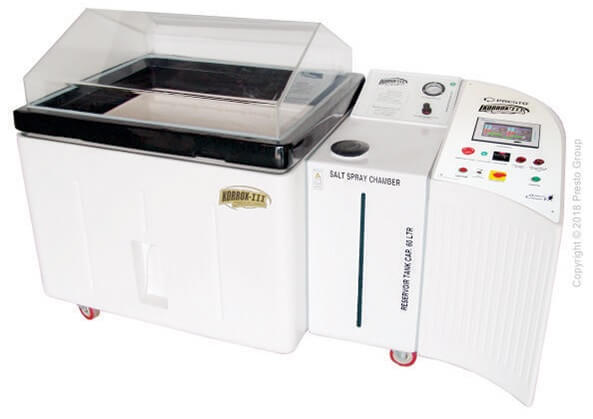What Does
Exposure Test Mean?
An exposure test is used to determine a material's stability when it is subjected to a chemical substance or environment. The test helps to identify and resolve concerns relating to the material's durability and service life.
In an exposure test, a representative sample of the material is exposed to either standardized or non-standardized conditions. The exposure time may be several weeks or months, depending upon the expected environmental conditions that the end product will be subjected to. The conditions may be worst-case conditions or standardized conditions in order qualify the use of the material for the application.
In chemical exposure studies, the material will usually be exposed to three different liquid environments over a specified period of time. In such cases, the entire material may be sprayed with a base, an acid or an organic solvent once per day. The material (including any fasteners, labels, and mating areas of connected components parts) is then evaluated for a change in appearance. In this way, various conditions that would usually instigate corrosion can be tested so that preventive measures may be implemented before actual use.
Exposure tests may be defined by ASTM methods or proprietary methods and specifications, and are typically performed for material selection and quality control purposes.
Corrosionpedia Explains Exposure Test
It is important for materials and products used in any industry to be able to withstand harsh conditions in order to prevent hazardous conditions. Exposure testing is used to determine a product's stability when exposed to a substance or chemical, and can help the manufacturer identify and resolve concerns related to the product’s durability and service life.
Some testing parameters that are typically considered include:
- Material (surface condition, presence of a weld, etc.)
- Temperature and pressure
- Phase
- Medium
- Aeration

Figure 1. Salt spray test machine. (Source: Presto Stantest Pvt. Ltd., CC BY-SA 4.0, via Wikimedia Commons)
Some common tests and corresponding standards are:
- Laboratory immersion corrosion testing of metals (ASTM G31)
- Testing of stress corrosion cracking (ASTM G36)
- Testing for galvanic corrosion (ASTM G71)
- Crevice corrosion testing (ASTM G78)
- Testing of atmospheric corrosion by salt spray tests (ASTM B117)
- Various tests of corrosion inhibitors
Accelerated corrosion tests are used to identify corrosion factors in various environments. They offer numerous advantages, such as being able to be carried out in a laboratory in a relatively short time period.
Standardized corrosion tests include ASTM, JIS, JASO and other standards. New and innovative exposure tests are constantly being developed for use in material selection.
Exposure tests are widely used in a number of fields, including the automotive industry, home appliances, electrical products, civil engineering and building construction, and others.